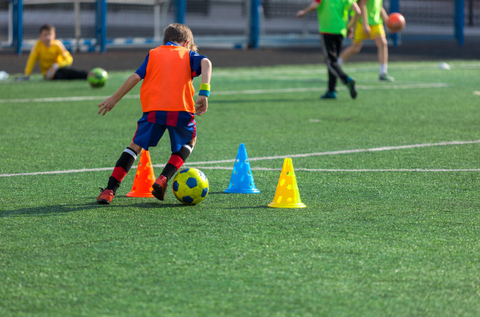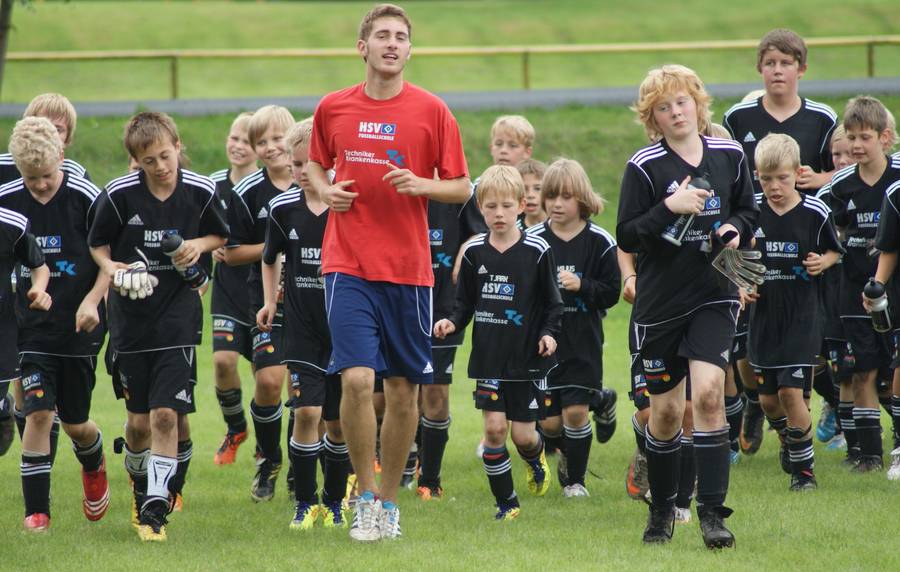The game has always been based on grassroots football. It's where players learn their first skills, coaches improve their leadership, and people come together around the sport they love. In the past, grassroots football depended a lot on passion, experience, and gut feelings. But in the last few years, data and analytics have started to change how the game is played and run, even at the local and amateur levels.
Analytics are no longer just for top clubs; they can be used for everything from tracking performance to avoiding injuries. Today, tools that were once only available to top-level professionals are also available to grassroots teams and coaches. This article talks about how data is changing grassroots football and why that matters for the sport's future.
The Growth of Football Analytics
Football analytics grew very quickly at the professional level in the early 2000s. Teams all over Europe and beyond started hiring data analysts, setting up performance departments, and using technology in their daily training. What began as simple charts of passes, shots, and possession has grown into a complicated field of study.
Professional teams now use GPS trackers, heat maps, and AI-driven tactical models to help them make decisions. Grassroots football quickly followed as technology became cheaper and easier to use.
Today, local clubs and amateur coaches can get powerful information for a small fee from platforms that offer match statistics, training data, and tools for developing players.
Using analytics to help players grow
One of the most important ways that analytics has changed grassroots football is by helping players improve.
Tracking Performance: Coaches can keep an eye on things like distance run, sprints, and recovery rates. This gives a better idea of how fit the players are and where they could improve.
Skill Evaluation: Coaches can use video analysis tools to look at technical details like how well a player passes, controls the ball, and shoots.
Personalized Feedback: Players now get specific suggestions based on how well they did instead of just general instructions.
Young athletes are very motivated by seeing their progress in numbers. It not only makes the team more competitive, but it also helps parents and coaches keep track of how well their players are doing.
Keeping players safe and preventing injuries
Grassroots football often has problems with player safety because there aren't enough resources and medical staff. That gap is being filled by analytics.
Coaches can better handle player fatigue by keeping track of their workload, training intensity, and recovery times. For instance:
If a youth player keeps running with heavier weights without enough time to recover, they may be more likely to hurt their muscles.
Coaches can use data to change training sessions, switch players out earlier, or suggest days off.
This move toward data-driven welfare makes sure that young players can have fun playing while lowering the risks that come with overtraining.
Tactical Tips for Coaches at the Grassroots Level
A lot of coaches at the grassroots level are volunteers or work part-time. They might not have years of experience as professional coaches, but data gives them the information they need to make smart choices.
Match Statistics: Keeping track of possession, passing accuracy, and chances created helps teams figure out what they do well and what they need to work on.
Formation Analysis: Coaches can try out different formations and see which ones work best against different teams.
Scouting the Other Team: Even at the amateur level, keeping track of and analyzing the other team's trends gives teams an edge.
These ideas make grassroots football more tactical, strategic, and fun for both players and fans who are watching from the sidelines.
Getting people involved in the community and being open
Analytics isn't just good for players and coaches. It also makes the bond with fans stronger.
Many local clubs now share stats and match information on apps or websites. Fans, parents, and people in the area can keep up with players' progress, celebrate their successes, and feel more connected to the team.
For instance, sharing "Player of the Match" stats or season-long leaderboards gets people involved and recognized. This openness also draws in sponsors and partners who want to work with clubs that are organized and think ahead.
Technology Making Things Happen
This change is possible thanks to a number of tools and technologies:
Wearables and GPS trackers are cheap devices that can measure distance, speed, and workload.
Video Analysis Software: Teams can use apps to record games and mark important moments to watch later.
Team Management Platforms: TeamStats.net and other tools give clubs a place to keep track of schedules, stats, and communication all in one place.
These solutions not only make analytics easier to understand, but they also make them useful for coaches who may not be very tech-savvy.
Analytics for the grassroots vs. the pros
Professional clubs use teams of analysts, but grassroots football is based on simplicity and ease of use. But the goals are still the same: to get better, avoid injuries, and win games.
The only difference is size. Analytics focuses on the following at the grassroots level:
Growth of individual skills.
Making the team work well together.
Promoting fair play and having fun with the sport.
This balance makes sure that data is important but that the heart of grassroots football—community and fun—stays the same.
Problems with using analytics
Analytics in grassroots football has some problems, even though it has some benefits:
Cost: Even cheap tech can be hard for small clubs with limited funds to get.
Training: Coaches and volunteers may need help understanding and using the data correctly.
Dependence: Football is still a game of passion and surprise. Data should not take the place of intuition and creativity; they should work together.
To deal with these problems, grassroots coaches and groups need ongoing training and help.
Data and everyday life beyond football
The rise of analytics in grassroots football is a sign of a bigger cultural shift. People want to see clear results in their fitness, gaming, and way of life. Data-driven experiences are a part of everyday life, from smartwatches that keep track of daily steps to platforms that let you compare statistics.
It's interesting that people who love grassroots football also tend to enjoy competitive entertainment in other areas. Analytics makes football more interesting, and bonus-driven platforms do the same thing in the gaming world. A casino $150 no deposit bonus is like a parallel sense of excitement: it rewards commitment and engagement without requiring any money up front, just like grassroots football rewards effort and participation before big breakthroughs.
The Future of Analytics at the Grassroots Level
Analytics will only become more important to grassroots football in the future. Some things that will happen in the future are:
AI-Driven Coaching: Suggestions for drills that are automatically made based on how well players do.
Virtual Training: Using AR and VR to improve your skills.
More community involvement: fans and parents using apps to keep up with live match stats.
As technology keeps getting better, grassroots football will get better too, but it won't lose its spirit.
Final Thoughts
Analytics is no longer just for high-end clubs or stadiums that cost millions of dollars. At the grassroots level, it gives coaches more power, keeps players safe, and gets communities involved. Grassroots football is entering a new era of growth and openness by combining passion with technology.
For young players, it means better ways to improve. It means that coaches can make smart choices. And for communities, it means that they will be able to connect with the game they love more.
Just like the best football players use analytics to stay ahead, local teams are showing that data can make the difference between good and great.


















